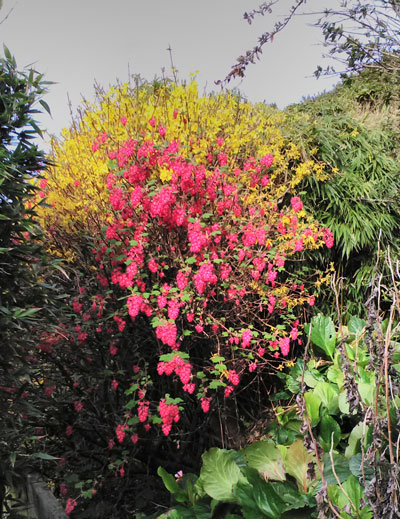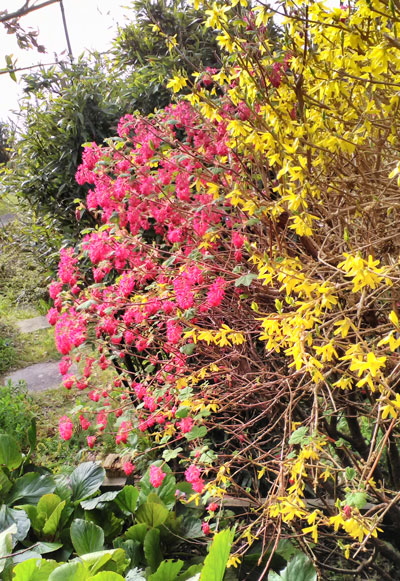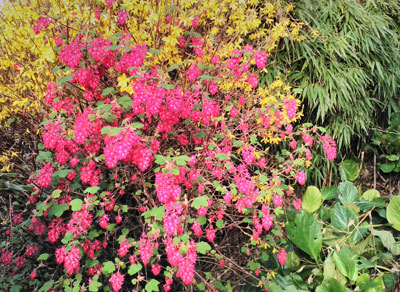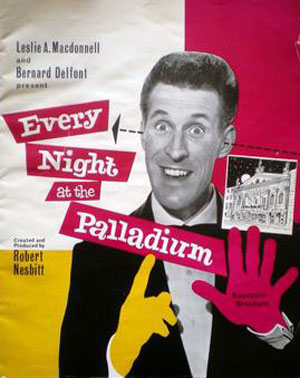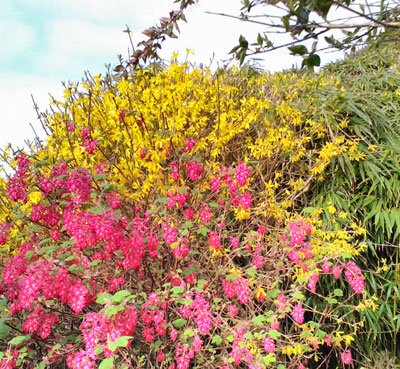Origins
Neither of these plants, it should be said, are native to Britain, yet they have made their home here very readily. Both are hardy in the UK; easy to cultivate and they thrive in just about any variation of climate or soil.
Flowering Currant (Ribes sanguineum ) is, as you can see, a vibrant shrub, deciduous, with clusters of pendulous dark-red florets. It comes from woods and rocky areas in North America, being introduced into the UK in 1817 where it has become a popular favourite in parks and gardens.
Forsythia, meanwhile, comes originally from the Far East, with varieties finding their way to Europe during the 19th century. It was named after a founding member of the Royal Horticultural Society, William Forsyth (1737–1804). Common in many a front garden or hedge it is celebrated for its profusion of bright yellow flowers. It is also deciduous, with the flowers preceding the leaves, which form on a tangle of gracefully arching stems before falling away in autumn.

The bare branches of Forsythia with deep yellow flowers preceding the leaves.
